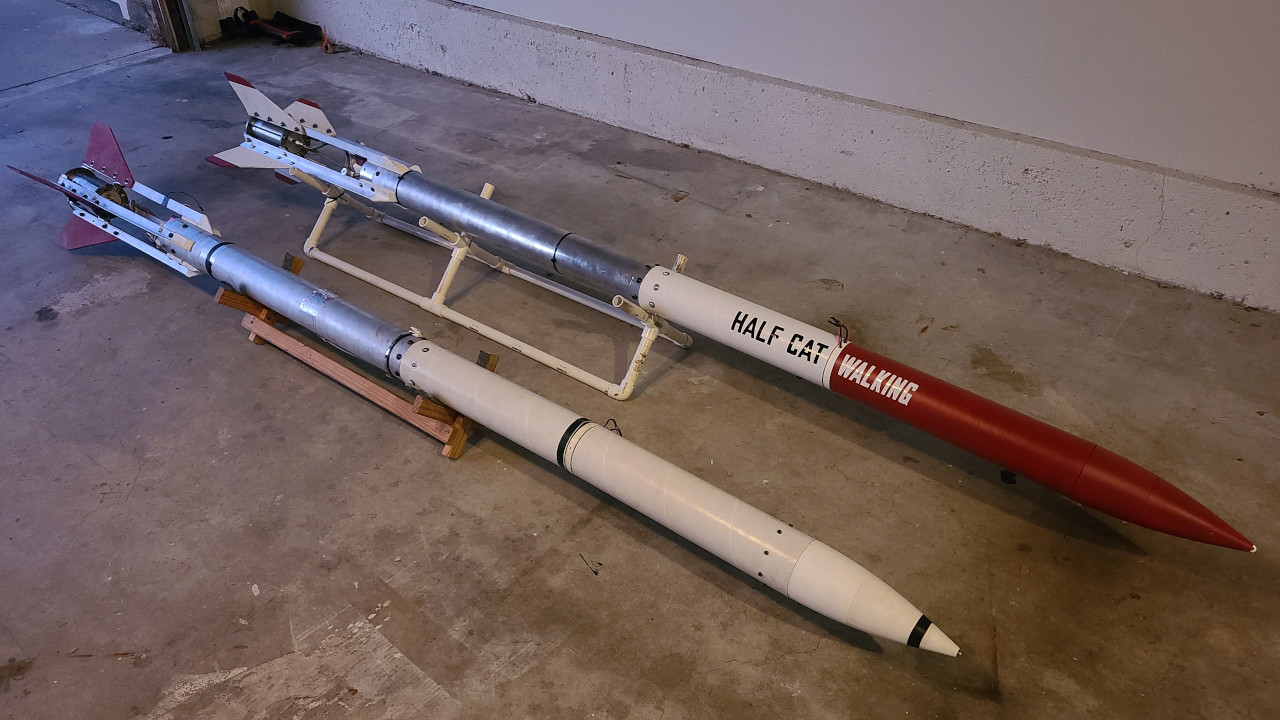Open Source Liquid Rocket Reaches for the Sky [Hackaday]

Since the very beginning, solid-propellants have been the cornerstone of amateur rocketry. From the little Estes rocket picked up from the toy store, to vehicles like the University of Southern California’s Traveler IV that (probably) crossed the Kármán line in 2019, a rapidly burning chunk of solid propellant is responsible for pushing them skyward. That’s not to say that amateur rockets powered by liquid propellants are completely unheard of … it’s just that getting them right is so ridiculously difficult that comparatively few have been built.

Now of course we’re still talking about literal rocket science here, so while we don’t doubt a sufficiently motivated individual could put one of these together on their own, you’ll probably want to gather up a couple friends and have a well-stocked makerspace to operate out of. All told, [Half Cat] estimates you should be able to build a Mojave Sphinx for less than $2,000 USD, but that assumes everything is done in-house and you don’t contract out any of the machining.
The design is the result of years of research and development that was aimed at distilling a liquid-fueled rocket down to its most basic form. There’s no gas generator, no turbine, no pumps of any kind. Controlling the flow of propellants within the rocket requires only a pair of servo-actuated valves thanks to the ingenious use of dual-acting vapor pressurization. Put simply, the rocket uses one large vertical tank that’s internally divided by a movable piston, with the oxidizer — nitrous oxide — on one side and the fuel — nearly any flammable liquid, such as alcohol or gasoline — on the other. The high-pressure nitrous oxide pushes down on the piston, which in turn pressurizes the fuel.
To get the most out of your investment, the Mojave Sphinx is designed to be entirely reusable. Assuming it makes a soft enough landing, you just need to refill the tank and launch it again. In practice it’s a bit more involved than that, but the team of [Half Cat] say they’ve managed to fly the same rocket multiple times in a single day. The handbook even has a handy maintenance schedule that tells you how often you should check or replace different components of the rocket. For example, it advises replacing the propellant piston o-rings every third flight.
The downside? There’s only so much performance you can wring out a rudimentary propulsion system like this. When compared to more simplistic solid-propellant rockets, the higher mass of the Mojave Sphinx puts the maximum altitude of the 96 inch (2.4 meter) long rocket at around 10,000 feet (3 kilometers). Still, we know plenty of folks who would call that a worthy compromise for being able to say they built their own liquid rocket.
Thanks to [concretedog] for the tip.

![open-source-liquid-rocket-reaches-for-the-sky-[hackaday]](https://i0.wp.com/upmytech.com/wp-content/uploads/2024/08/206013-open-source-liquid-rocket-reaches-for-the-sky-hackaday.jpg?resize=800%2C445&ssl=1)
